Crime
Who Says Museum Heists Don’t Pay? Here Are 5 Ways Crafty Criminals Actually Profit From High-Profile Art Thefts
Stolen art can be a hard sell. We spoke to the experts about what thieves tend do with it.
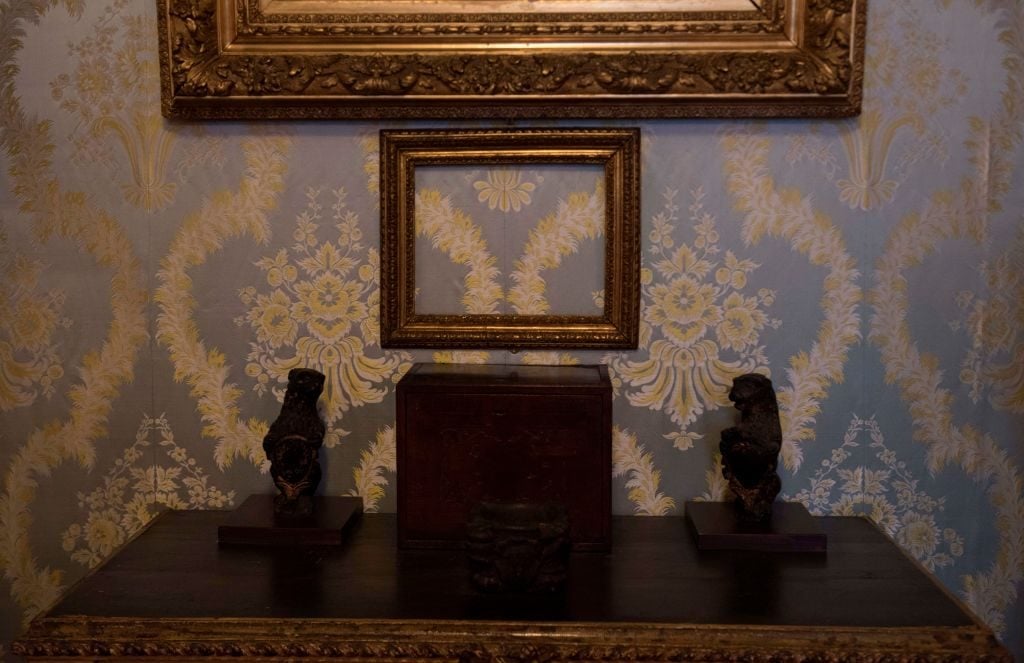
Stolen art can be a hard sell. We spoke to the experts about what thieves tend do with it.

Naomi Rea

The FBI estimates that art crime is multi-billion-dollar-a-year illicit industry, and while much of it is made up of low order theft, the plundering of a museum never fails to steal headlines.
Earlier this summer, an opportunistic thief stole a Van Gogh painting from a Dutch museum in an audacious smash-and-grab. News reports widely noted the work’s $6 million value on the legitimate market, but what is the true worth of a stolen masterpiece? Who buys a work that can’t be publicly shown?
We consulted experts on what actually happens to a work of art once it has been stolen. Here are the five pathways that thieves tend to take to cash in on their larceny.

The stolen De Kooning seen hanging behind Jerry and Rita Alter’s bedroom door. Photo by Rick Johnson, courtesy of Manzanita Ridge Furniture and Antiques.
When we hear about a museum heist, we might picture a wealthy billionaire presiding over a vast trove of the world’s most wanted art.
Indeed, there have been a few people caught stealing art for their own private collections, such as the notorious French art thief Stéphane Breitwieser, who made off with some 239 artworks from museums. Or the seemingly innocuous Tucson couple, who were discovered to have had a $160 million stolen Willem de Kooning hanging in their bedroom for decades. But art crime professor Erin Thompson, who works at John Jay College of Criminal Justice in New York, tells Artnet News that this is rare. “We’ve busted plenty of reclusive, unscrupulous, powerful art lovers, from dictators to drug lords, but we haven’t found stolen masterpieces on their walls,” she says.
While an elaborate heist of the Mona Lisa on behalf of a villainous art buff might make a good Hollywood movie, the reality is often much more prosaic. More often, thieves spot a vulnerability in a museum’s security system, steal the art, and find out later that it is harder to move than they previously thought.
Thompson says that the most successful thieves have actually targeted objects for their raw materials rather than the object as a whole. For example, it is less conspicuous to break off a valuable horn from a taxidermy mount, or to melt down an object for the value of its precious metals, or break up jewelry to sell as individual pieces (which was most likely the fate of the diamonds stolen from Dresden’s Green Vault). But outside of an investment in a co-ownership scheme, one square inch of a Van Gogh painting isn’t worth a whole lot to anyone.
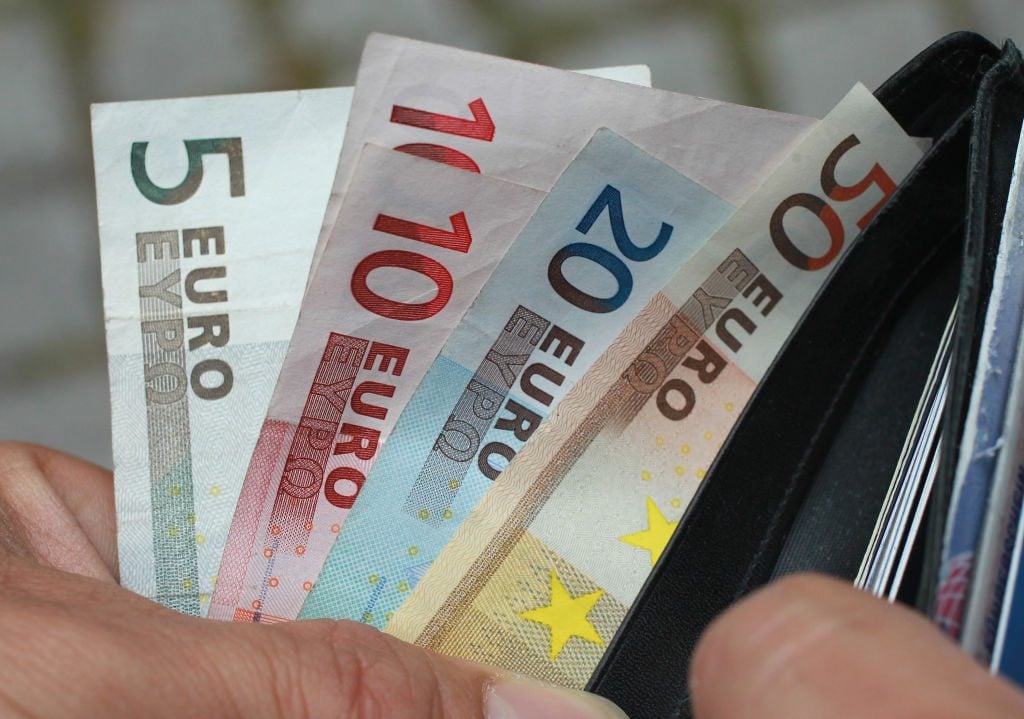
Photo Illustration by Sean Gallup/Getty Images.
Christopher Marinello, chief executive at Art Recovery International, who has been working in the field of lost art for 30 years, tells Artnet News that thieves will often try to sell a work back to the museum that it was stolen from. In 80 percent of cases, Marinello says that criminals will either try to hold the work for ransom, or wait for the museum to announce a reward for the return of the work.
But this doesn’t always work. Some museums will refuse to negotiate with criminals, and the risk of getting caught in a sting operation while collecting on a ransom or a reward is high. There is currently a $5 million reward out for information leading to the recovery of 13 priceless masterpieces that were stolen in the infamous 1990 Isabella Stewart Gardner Museum heist, but the paintings have never been recovered.
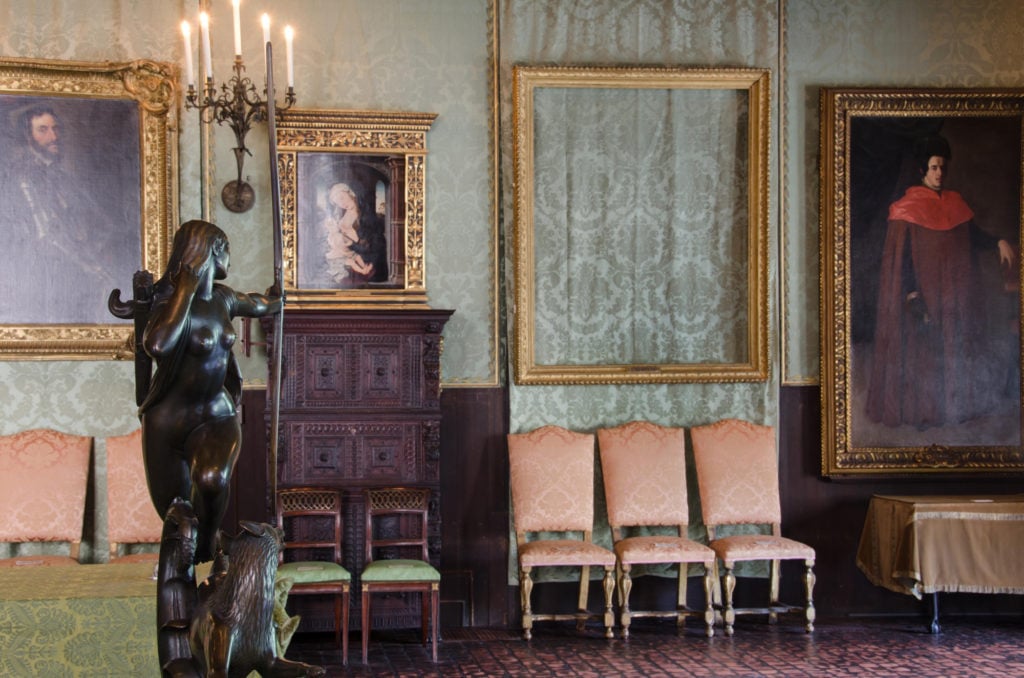
At the Isabella Stewart Gardner Museum, empty frames now hang in the Dutch room in place of Rembrandt’s The Storm on the Sea of Galilee and A Lady and Gentleman in Black. Courtesy of the FBI.
Other times, thieves will go directly to the insurance company, as ownership of the work often passes to the insurer after it has paid out for losses. Marinello, who has several art insurance companies as clients, says it is not uncommon for thieves to try and ransom work to the insurance company directly.
Sometimes, thieves have inside knowledge of museum’s insurance policies, but other times they just mike a wild guess—which doesn’t always pay off. Insuring irreplaceable artwork against theft is sometimes prohibitively expensive for museums; the Gardner paintings, for example, were not insured against theft. But Thompson says that if there is theft coverage, insurance companies generally offer a no-questions-asked reward for return. “So, you can steal a painting and give it to your girlfriend to hand over to the insurers—she’ll say she found it in a bus stop and you’ll get around 10 to 15 percent of the value of the art,” Thompson says.
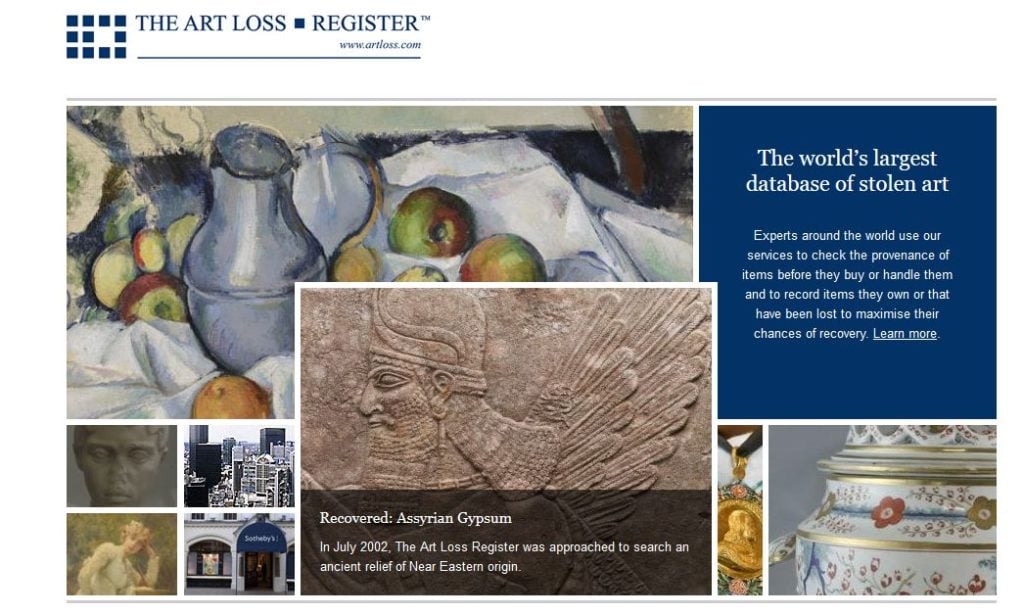
The Art Loss Register website.
Thieves who fail to cash out from museums or insurers may attempt to sell their acquisition on the legitimate market, such as through auction houses or dealers.
This is easiest when the objects have not yet been reported as stolen, which is why Thompson says that smarter thieves will target objects that aren’t currently on display, preying on the weaknesses of underfunded museum storage facilities or library stacks.
In cases where the missing work has been reported, the thief will be hard pressed to find a reputable art dealer today who neglects their due diligence. There are several databases of stolen artworks, from the Art Loss Register to the FBI and Interpol that dealers can easily cross check before committing to a purchase. All it takes is a couple of clicks from a prospective buyer to land a criminal in the clink, as was the case in the Transy Book heist, when thieves tried to have Christie’s appraise more than $5 million worth of rare books, or the fate of a pair of knuckleheaded art thieves who tried to flog a group of stolen paintings to an art dealer in Bucharest.
That said, there are still some places—Marinello singles out Russia, Saudi Arabia, and the UAE—where buyers tend to be less scrupulous about the origins of objects.
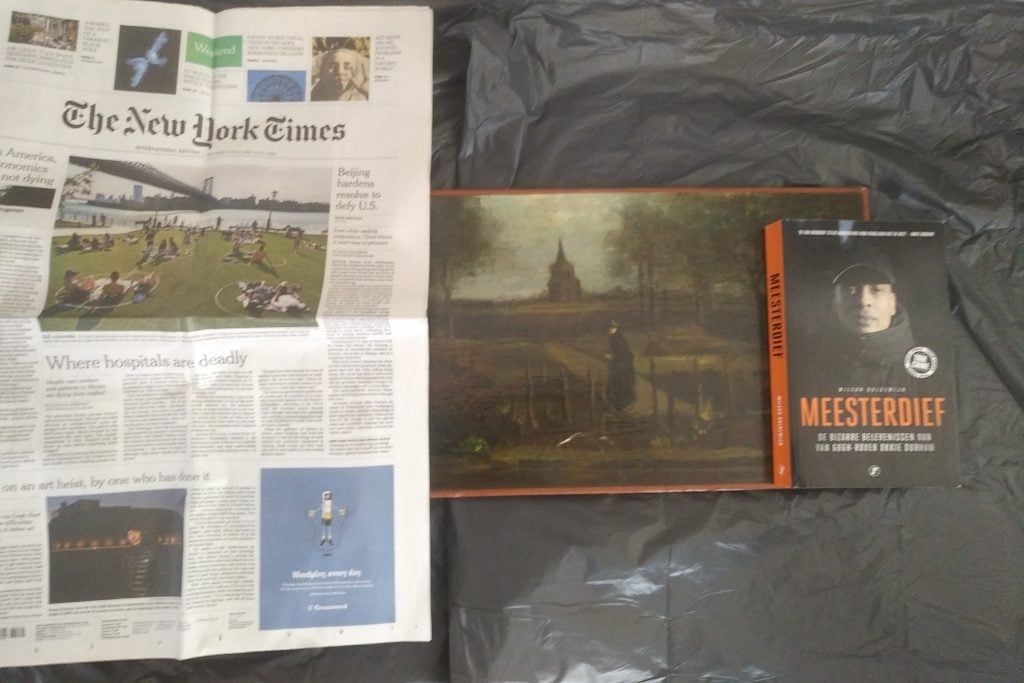
The image that has been circulating of Van Gogh’s stolen The Parsonage Garden at Nuenen in Spring (1884). Image courtesy of Arthur Brand.
One possible trajectory for the Van Gogh painting that was stolen earlier this summer was revealed more recently when a photograph of the stolen work surfaced as an ad in the criminal underworld.
According to the experts, the black market is the last resort for art thieves hoping to monetize their stash. There, criminals are hard pressed to find a legitimate buyer and, as FBI art crime specialist Christopher McKeogh tells Artnet News, there is risk associated with the sale. “Individuals have been known to create fake versions of well-known stolen works,” McKeogh says. “If a stolen artwork is discovered on a black market, there’s a good chance it could be a fake and completely unrelated to the original theft.”
This is why art sells for a fraction of its true value on the black market, as the infamous Dutch thief Octave Durham found out, much to his chagrin, when he unloaded two Van Gogh paintings that he had stolen from the Van Gogh Museum in 2002 to an Italian mobster for less than $400,000.
Once circulating in the criminal underworld, masterpieces take on a whole new currency and trajectory that has far less to do with aesthetics than with their value as collateral.
Drug traffickers have been known to use stolen artwork for loan security, and artwork can be traded for weapons. In these cases, McKeogh says, “it is always hoped that the thieves know how to stabilize or care for what are usually fragile items.”
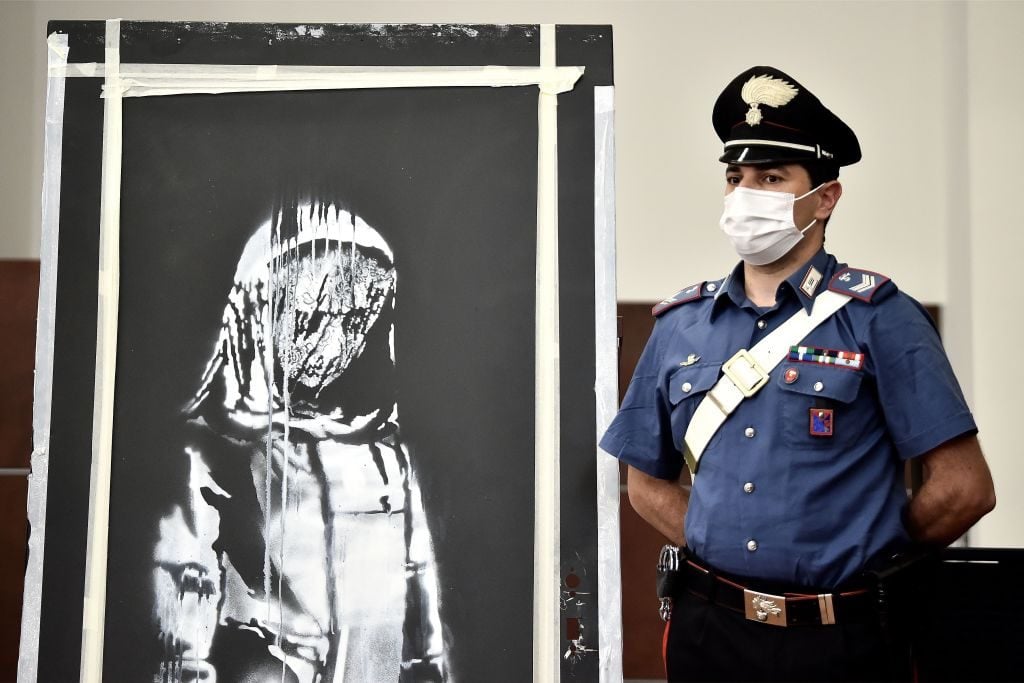
An Italian Carabiniere poses near a piece of art attributed to Banksy, which was stolen at the Bataclan in Paris in 2019, and found in an abandoned farmhouse in Abruzzo. Photo by Filippo Monteforte/AFP via Getty Images.
Often, works end up in the hands of mobsters who use them as “get-out-of-jail-free” cards, turning over information on their whereabouts in exchanged for reduced sentences. That is often the case when works mysteriously turn up, as it happened with a Gustav Klimt painting was discovered in an alcove in the museum’s garden. Ultimately, Durham’s stolen Van Goghs ended up in the hands of an Italian gangster used them to negotiate a lesser sentence for drug trafficking.
One can only hope for such an ending for the Van Gogh that was just stolen this summer from the Dutch museum—for the sixth and final pathway for stolen art is much more tragic.
It is an “investigator’s greatest fear,” McKeogh says, that a thief may panic or grow frustrated and destroy a priceless work of art. This has been the case for many an ill-advised heists, such as the five Modernist paintings stolen from the Musée d’Art Moderne in Paris, and dozens of Breitwieser’s stolen Old Masters, which ended up in the bottom of a canal.